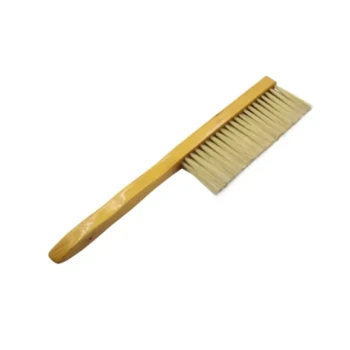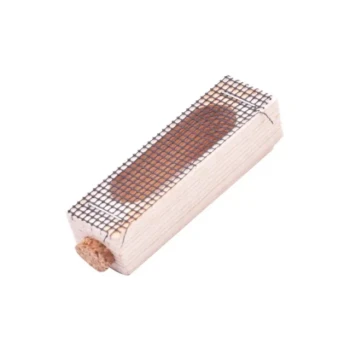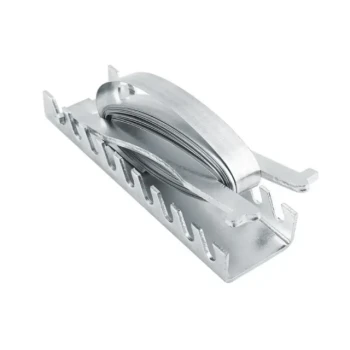To put it simply, maintaining tidy conditions in and around a beehive is one of the most effective strategies for ensuring the colony remains healthy, productive, and resilient. A clean environment directly supports the bees' natural hygienic behaviors, making it easier for them to defend their home against pests and diseases that thrive in debris and neglect.
A beekeeper's definition of "tidiness" goes beyond simple cleaning. It is a proactive management strategy focused on removing opportunities for pests and disease to take hold, thereby supporting the colony's long-term health and stability.
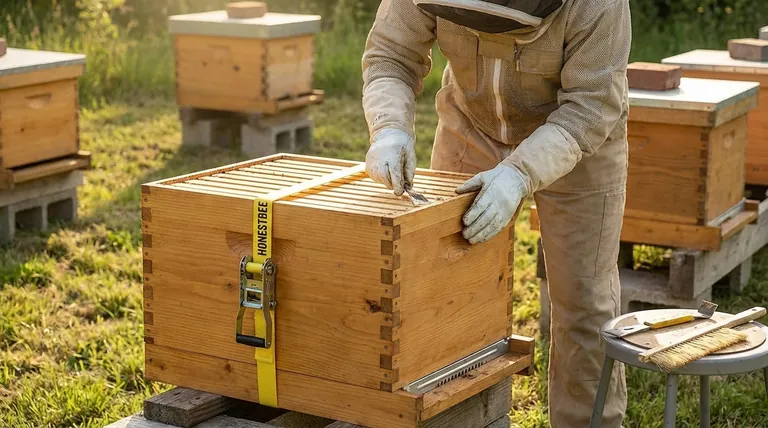
The Core Principle: A Clean Hive is a Defensible Hive
Bees are naturally clean creatures, but they can be overwhelmed. A tidy hive environment, managed by the beekeeper, gives the colony a significant advantage in its fight for survival.
Discouraging Pests
Pests are opportunistic. Debris like discarded wax cappings, pollen, and dead bees on the hive's bottom board create the perfect habitat and food source for invaders like wax moths and small hive beetles.
By regularly cleaning the bottom board, you remove the primary environment these destructive pests need to reproduce and establish a foothold in your hive.
Preventing Disease
A cluttered, damp, and poorly ventilated hive is a breeding ground for fungal and bacterial diseases. Conditions like chalkbrood, for instance, can flourish when moisture is trapped by excess debris.
Ensuring the hive is clean, dry, and has good airflow is a fundamental step in disease prevention. It denies pathogens the conditions they need to thrive.
Supporting Bee-Led Housekeeping
Honeybees have their own "undertaker" bees that are tasked with removing dead bees and debris from the colony. This is a critical hygienic behavior that helps prevent the spread of pathogens.
When a hive is cluttered or the entrance is blocked by overgrown grass, it makes it harder for the bees to perform these essential housekeeping duties. A tidy setup enables them to manage their own home more effectively.
Expanding "Tidiness" Beyond the Hive Box
Effective hive maintenance isn't just about what happens inside the box. The immediate surroundings play a crucial role in the colony's overall health and the beekeeper's ability to manage it.
Managing the Ground Area
Keeping the grass and weeds trimmed around the hive entrance is essential. Tall vegetation provides a hidden ladder for crawling pests like ants to gain access to the hive.
Furthermore, a clear area prevents moisture from wicking up into the hive, reduces drafts, and gives you, the beekeeper, safe and easy access for inspections.
Ensuring a Stable Internal Environment
A "tidy" hive is also one that is structurally sound and well-maintained. Cracks and holes can create drafts and allow pests and robbers in, forcing the bees to expend energy on repairs and defense.
Proper insulation, while not a cleaning task, contributes to this stable environment. It helps the bees maintain a consistent internal temperature in both winter and summer, reducing their stress and energy consumption.
Understanding the Trade-offs
While crucial, hive maintenance must be done with an understanding of its impact on the colony.
The Risk of Over-Intervention
Every time you open the hive, you break the propolis seals the bees have created to defend their home and you disrupt their work. While inspections are necessary, they should be deliberate and efficient.
Over-managing a hive can cause more stress than the problems you are trying to solve. The goal is to find a balance between necessary maintenance and letting the bees manage their own colony.
Normal Debris vs. Problem Signs
A small amount of debris on the bottom board is perfectly normal. However, you must learn to distinguish this from signs of a deeper problem.
An excessive number of dead bees could indicate a failing queen, poisoning, or a high mite load. Learning to "read" the debris is a key beekeeping skill that turns cleaning into a diagnostic tool.
Making the Right Choice for Your Goal
Your approach to hive tidiness should be guided by a clear understanding of your goals as a beekeeper.
- If your primary focus is pest prevention: Regularly clean the bottom board and keep the area around the hive clear of tall grass and weeds.
- If your primary focus is disease control: Ensure your hive has good ventilation and is dry, and be vigilant about removing any comb that shows signs of mold or infection.
- If your primary focus is overall colony health: Perform regular but brief inspections to monitor for problems, allowing you to intervene early without causing excessive stress to the bees.
By viewing tidiness as a strategy for proactive hive defense, you empower your bees to thrive.
Summary Table:
| Benefit of a Tidy Hive | Key Action for Beekeepers |
|---|---|
| Discourages Pests | Regularly clean the bottom board to remove wax debris and dead bees. |
| Prevents Disease | Ensure good hive ventilation and remove moldy or infected comb. |
| Supports Bee Hygiene | Keep the hive entrance clear to aid the bees' natural cleaning behaviors. |
| Enables Easy Management | Maintain a trimmed area around the hive for safe, efficient inspections. |
Equip your apiary for success with HONESTBEE. A tidy, well-maintained hive is your first line of defense. We supply the durable, high-quality beekeeping supplies and equipment that commercial apiaries and distributors rely on to maintain healthy, productive colonies. Let us help you build a stronger, more resilient operation. Contact our wholesale team today to discuss your needs.
Visual Guide
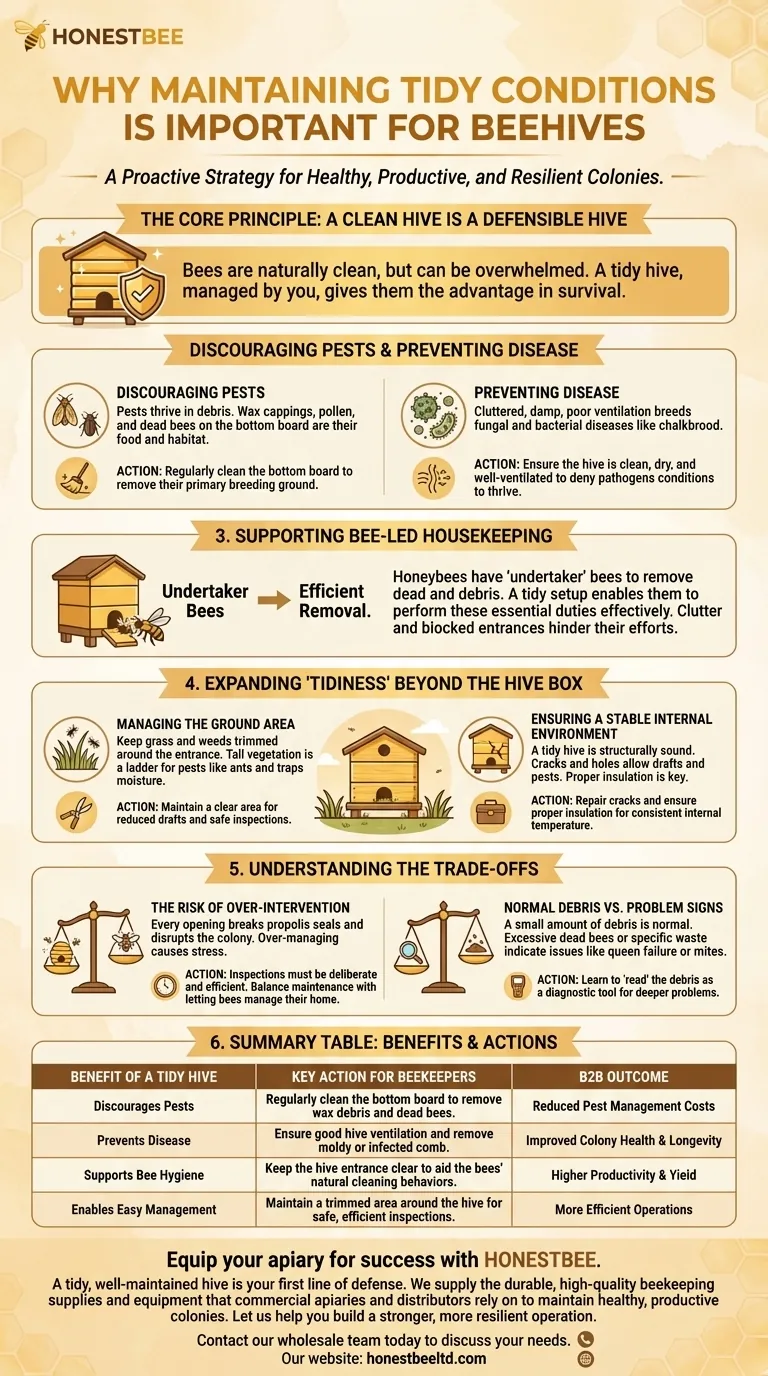
Related Products
- Professional Galvanized Hive Strap with Secure Locking Buckle for Beekeeping
- Wooden Bee Brush with Triple Row Artificial Fiber for Beekeeping
- Professional Bamboo Queen Isolation Cage
- Professional Drop-Style Hive Handles for Beekeeping
- Professional Engraved Round Hive Number Tags for Beekeeping
People Also Ask
- What are hive straps and why are they used? Secure Your Hives Against Wind, Predators, and Transport
- What are the two styles of hive straps? Choose the Right Strap for Your Hive Security
- Why are hive straps important for beekeepers? Secure Your Hives Against Wind, Predators & Transport
- What is the advantage of using cam buckle straps? Secure Your Load Fast with Simple, Safe Tensioning
- Can straps with hook ends be used for beehives? A Guide to Secure Hive Management

